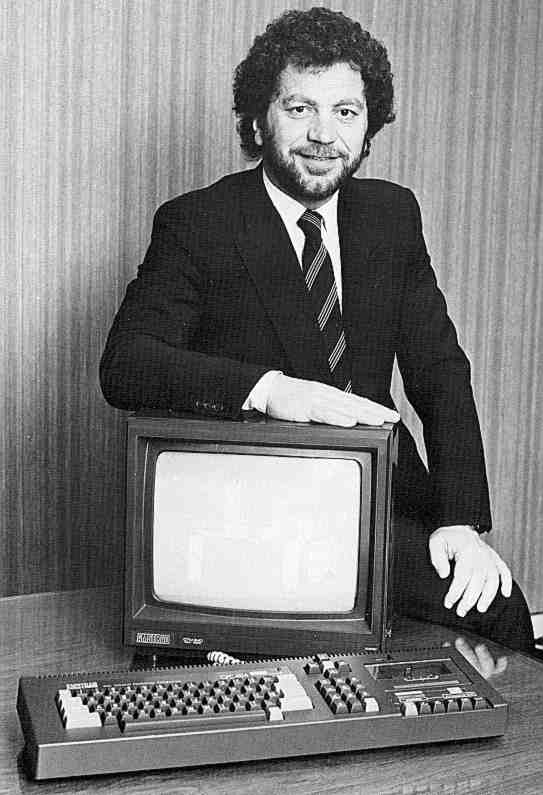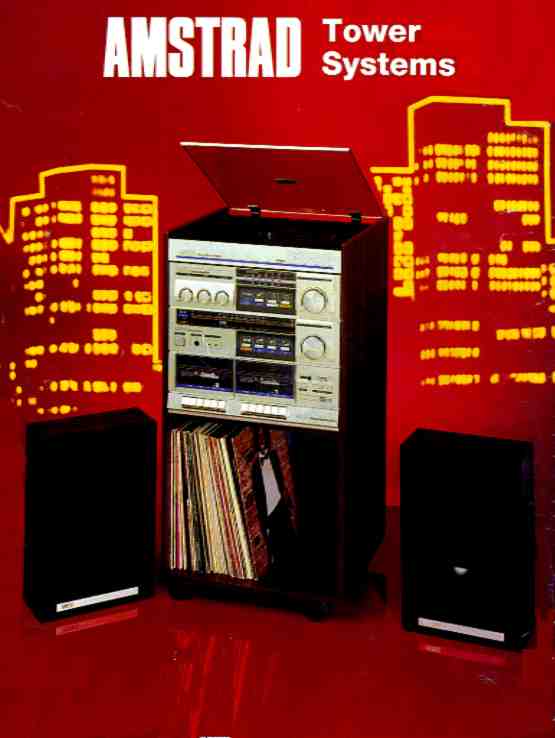| Alan Sugar - Amstrad and the CPC |
| Written by Historian | |||
Page 1 of 2
Some computer companies of the 1980s seemed to be in the business of making hi-tech equipment. Their philosophy was that once they have the cleverest design then the profits will follow because technology sells. Such companies are always interesting to users who know about computers because they make such impressive and admirable products. However, companies that make the cheapest, most cost-effective, solutions are the ones that make the real money, even if their products are technically a bit boring and backward. In the UK Amstrad was the first company to look at computing with an eye to producing something cheap and cheerful and in doing so they revolutionised the computer marketplace.
Alan Sugar, born 1947, London UK Alan Sugar was born in 1947 in the East End of London. His father worked as a tailor and Alan, by all accounts, was a fairly unremarkable child. His two sisters and brother were all much older than Alan and his upbringing was more like that of an only child surrounded by adults. He was solitary but not bookish. In fact the Sugars had few academic aspirations and when Alan did reasonably well at school his father didn’t want him to stay on. A “proper” job was what Alan was destined for, in his father’s opinion. Having failed the 11+ he was attending a technical secondary school and studying science and engineering. While at school the first glimmerings of his true destiny were revealed. He took photos, processed them and sold them with “Alan Sugar Photographer” printed on the back. He had a ready talent for selling and worked in various shops and market stalls on Saturday. On leaving school his first job was with the Civil Service, processing statistics. He found himself shuffling paper rather than doing anything difficult or creative and so he was bored. After less than a year he quit, to his father’s horror, and took up a job which was almost as boring in another office. However, had enough time and energy left over to do a little work in his spare time. He and a friend decided to sell TV sets. They would pick up some broken sets by the batch, fix them and sell them on. It wasn’t hugely successful but Alan had now some experience of working for himself and he could see that there was money to be made selling electronics.
A Robuk Tape Recorder Science Museum Group. Tape Recorder Case Lid. After the TV business he moved to Robuk Electrical and became a salesman, complete with van. Travelling around London he sold tape recorders to all of the hi-fi stores. This was all useful training and he could also see that he could do the same job without Robuk Electrical and make more money – but he needed his own van. Eventually he had enough saved to buy a van and after some negotiations set up an account with Binatone to sell imported electronics. His first order was secured by a post-dated cheque but within the same day he had sold the lot and was back with cash for more. He sold the week’s stock in a single day and made more than 20% on the deal. In 1968 he created AMS Trading Ltd– later the name was changed to AMS Trading (Amstrad) Ltd. From marketing to manufacturingAlan’s conversion from marketing to manufacturing was unexpected. He noticed that covers for record turntables were very expensive and he decided to find out why. He discovered that they were being made by vacuum forming and that injection moulding would be much cheaper – except that the price of the mould was high. Alan invested just short of £2000 in a mould and started selling covers and plinths at prices below anyone else. After covers and plinths he moved into amplifiers. At the time the market for amplifiers was dominated by the high-price, high-quality brands that hi-fi enthusiasts would discuss at length. Alan decided that there was a market for low-price, value-for-money, amplifiers aimed at the ordinary consumer. His first amplifiers weren’t technically advanced or even particularly good. He realised that the non-specialist buyer didn’t understand all the jargon and concentrated on what the amplifiers looked like and on the single numerical measure that they could understand – Watts. Amstrad amplifiers always provided more power per pound than any other on the market. The hi-fi trade and the enthusiasts were very cool about Amstrad’s amplifiers. Most of them thought they were crude rubbish and most of them said as much. It made no difference, the amplifiers were a huge success and sold by the truckload through Comet, Curry’s and the other main street retailers. The TS40 Tower System
There are many stories concerning Amstrad’s adventures in the consumer electronics market – car auto, CB radio, TV sets, etc. – but this story is about computers. There is one development in the hi-fi area that Amstrad pioneered that has a direct bearing on Amstrad’s computers. At the time hi-fi equipment was sold as “separates”. You bought an amplifier, tuner, tape deck and so on and plugged them together. Often a special “tower” rack was used to group them together but there was still a mass of wiring round the back. Alan Sugar believed that this was more than the average user wanted. They didn’t want to be fussed plugging everything together they just wanted to listen to the music. His brilliant idea was to put everything together into what looked like a tower rack but already wired up. A single unit built to look like a collection of separates was cheaper to build. By combining the units into one, a single power supply would do and you could avoid all the connectors. Simpler, cheaper and it looked good – Amstrad’s Tower Systems sold in huge numbers all over Europe. This one product made Amstrad’s fortune but still the hi-fi buffs thought it was rubbish! <ASIN:023074933X> <ASIN:1844547027> <ASIN:0563493372> <ASIN:0471499498> |
|||
| Last Updated ( Sunday, 14 April 2024 ) |



